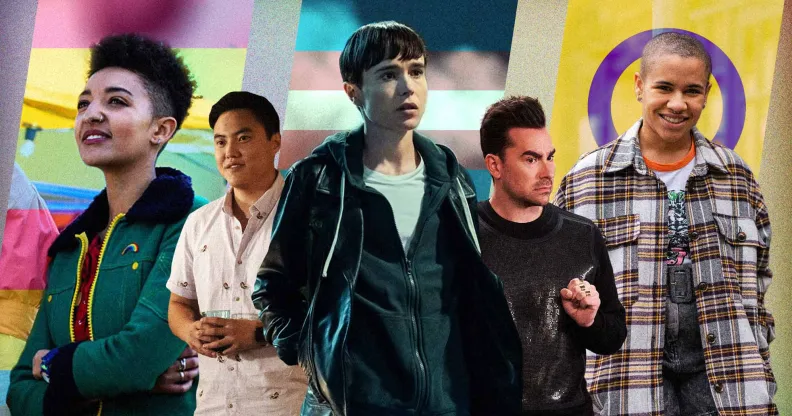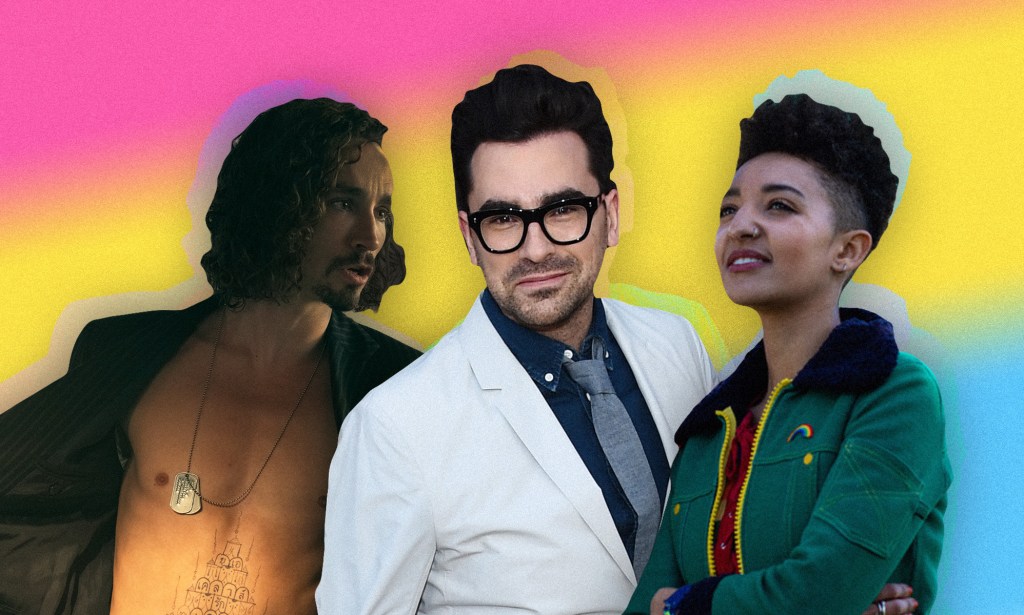Pansexual, intersex and transgender people worst represented in LGBTQ+ media, damning survey finds

Research from leading LGBTQ+ charity Just Like Us has found pansexual, intersex and transgender people have the worst LGBTQ+ representation in media (Getty)
Research from leading LGBTQ+ charity Just Like Us has found pansexual, intersex and transgender people have the worst LGBTQ+ representation in media.
LGBTQ+ representation in media has been on a journey over the past few years. There is steady progress in mainstream representation with fresh queer shows including Netflix’s Heartstopper, critically acclaimed films such as Everything Everywhere All At Once and an ever-increasing list of LGBTQ+ book releases.
However, as queer representation in mainstream media continues to attract LGBTQ+ book bans, threats to mega entertainment corporations and backlash from right-wing conservative politicians and pundits in the US, where anti-LGBTQ+ legalisation is rising at an alarming rate, there is still a long way to go.
According to stark new research from LGBTQ+ young people’s charity, Just Like Us, a significant demographic in the community are being neglected by media.
In an eye-opening new study, LGBTQ+ young adults found that pansexual, intersex and trans representation is the worst of all LGBTQ+ representation in the media.

The new study, which forms part of a new report by the charity examining the experiences of LGBTQ+ young adults in the UK, surveyed 3,695 people aged between 18 and 25 (1,736 of whom were LGBTQ+ respondents) about which demographics are actually well-represented in the media.
LGBTQ+ young adults felt intersex identities were least likely to be well-represented in media, with 62 per cent saying they were “rarely or never” portrayed positively.
Intersex representation in media is few and far between. 2000’s teen drama Freaks and Geeks character Amy Andrews (Jessica Campbell) remains one of the most prominent portrayals of an intersex character on screen, while queer intersex actor Ki Griffin has previously spoken on the importance of bringing intersex representation to Hollyoaks with their character Ripley Lennox.
This was followed by 47 per cent who said that pansexual people were “rarely or never” portrayed positively.
Pansexual representation has certainly seen its highs and lows, with characters such as Schitt’s Creek‘s David Rose (Dan Levy) universally praised as a beacon for the community, while shows such as Big Mouth have been forced to apologise for pitting bisexuality and pansexuality against each other.

Forty-eight per cent of transgender young adults also said that transgender identities were “rarely or never” portrayed positively, compared to 38 per cent of all LGBTQ+ young adults, and 24 per cent of non-LGBTQ+ young adults.
Trans man and Just Like Us ambassador Charlie, shared: “I’ve always used films and TV as an escape to explore new worlds and meet new characters, for a long time I never came across a character like me. It felt like I was alone.
“I didn’t know any other trans men in my real life, and was desperate to see someone on screen who was like me.
“It’s more important than ever that we discuss trans representation, because trans characters have the power to make trans young people like me feel seen.”
Although there have been recent wins for trans representation, such as the casting of trans actors Yasmin Finney and Pete MacHale in the upcoming season of Doctor Who, there hasn’t been universal progress. A GLAAD report at the end of last year found film studios are still majorly failing when it comes to trans representation, shown best through the unceremonious axing of DC film Batgirl which would have starred the franchise’s first trans character.
Elsewhere, 15 per cent of LGBTQ+ young adults surveyed said that lesbians were “rarely or never” portrayed positively in the media, and eight per cent said the same of gay men.
The survey notes that LGBTQ+ young adults were far more likely to find their own demographic to be negatively portrayed. More generally, non-LGBTQ+ young adults were more likely to find LGBTQ+ identities portrayed positively, with 11 per cent of non-LGBTQ+ respondents finding transgender representation “always” positive in the media.
This perhaps indicates the importance of having queer stories told by the people from those communities to carve out a more authentic connection with LGBTQ+ viewers.
Amy Ashenden, interim CEO of Just Like Us, said: “All young people need someone to look up to in order to feel positive about their futures, and we hear time and time again from the young people we work with that media representation of LGBT+ identities plays a huge part in helping them to feel seen and valid.
“Positive media representation not only helps LGBT+ young people themselves, but also shows the humanity of LGBT+ lives to the non-LGBT+ people around them.”

